In this article
Note: This article’s statistics come from third-party sources and do not represent the opinions of this website.
Dog bites are a fact of life. Many animals will snap at other animals or humans when they feel stressed and threatened. Most dogs that attack people tend to be not well-socialized or suffer from abuse and neglect. But under stress, many dogs have the potential to bite.
This awareness is even more critical if you have young children at home. Children should never be left alone with a dog, and they need to be taught from a young age how to treat dogs (and any animal) with respect.
Here are statistics focusing on dog bites and attacks in Canada. Unfortunately, there isn’t much research in this field specifically relating to Canada, so most of the numbers are from older studies.

Top 12 Canada Dog Bite Statistics
- It’s estimated that there are over 500,000 dog bites annually in Canada.
- About 500 Canada Post workers are bitten every year.
- Canadians are twice as likely to be bitten by a dog in a city than in the country.
- Children ages 5 to 9 years are most commonly bitten by a dog.
- Adults are most commonly bitten on the hands and young children on the face and neck.
- It’s estimated that there are one to two fatalities in Canada from dog attacks yearly.
- Of the 28 fatalities between 1990 and 2007, 24 of them were children under 12.
- The prairie provinces had the highest incidents of fatal dog attacks.
- 58% of Canadians believe that attacks are due to bad owners and not bad dogs/breeds.
- All provinces have sided with the “bad owners, not bad breeds” stance.
- Younger Canadians are likelier to fall on the “bad owners” side.
- 67% of Canadians support muzzling breeds considered “dangerous.”
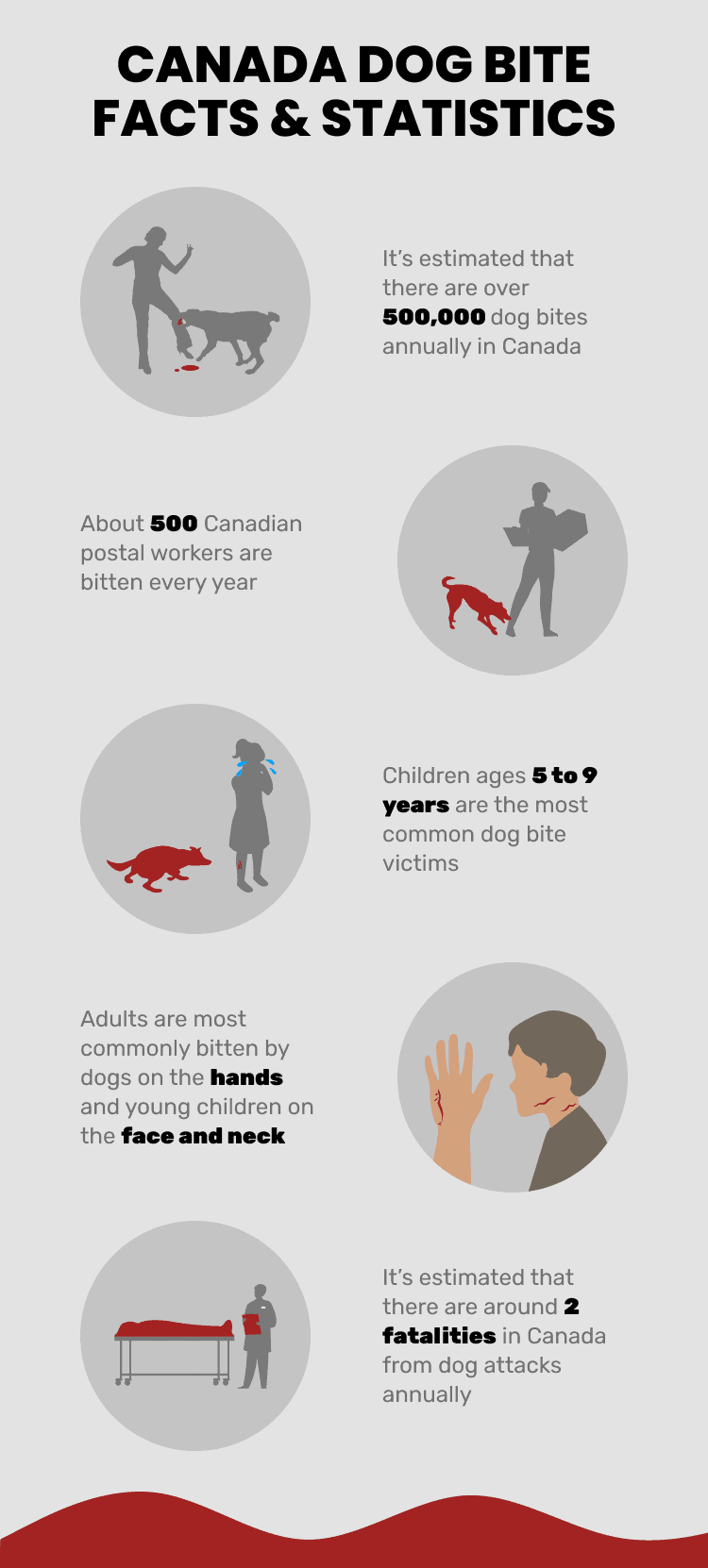

Canadian Dog Bite Statistics
1. It’s estimated that there are over 500,000 dog bites annually in Canada.
(Cision, All Dogs Can Bite)
It’s also estimated that 42 Canadians are bitten by a dog every hour. The Humane Society of Canada has additionally stated that a Canadian suffers a dog bite every 60 seconds. Compare these numbers to the 4.5 million Americans bitten by dogs each year!
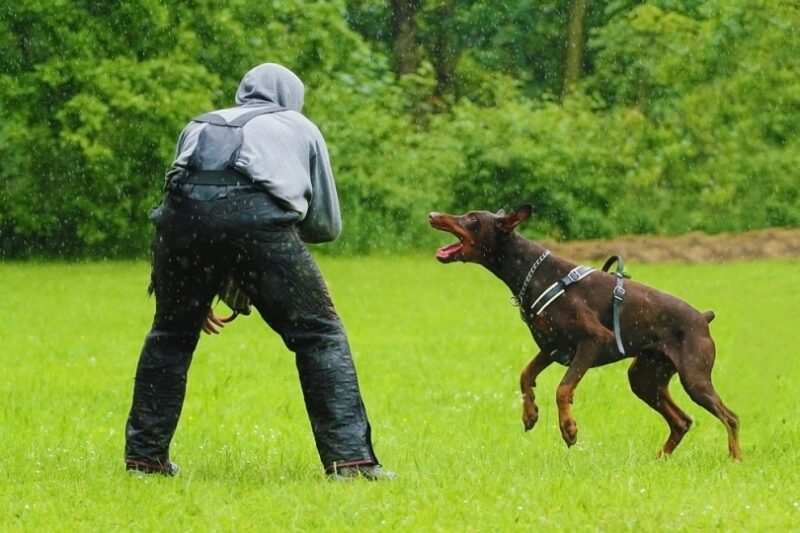
2. About 500 Canada Post workers are bitten every year.
(CBC)
Postal workers were bitten by 60 dogs (and one cat) between 2015 and 2019 in Hamilton, Burlington, Niagara, and Norfolk County. Thirty-one of these injuries were considered disabling.
3. Canadians are twice as likely to be bitten by a dog in a city than in the country.
(University of Guelph)
The 2020 University of Guelph study found that most of the bites in cities are by an off-leash dog. In rural areas, 6% of households have a minimum of one person bitten compared to urban households, which had almost 11%. Unfortunately, 17% of the off-leash dogs were also not vaccinated against rabies.
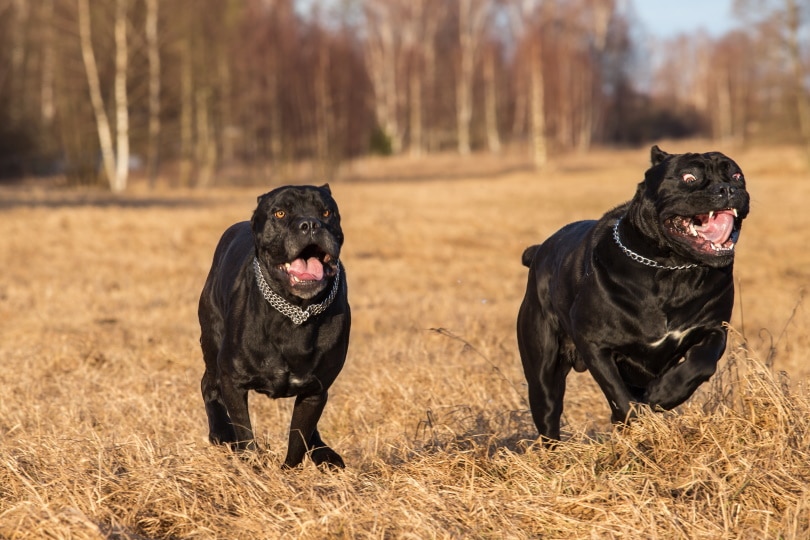
4. Children ages 5 to 9 years are most commonly bitten by a dog.
(Injured.ca)
Children ages 5 to 9 years were the highest number bitten, and possibly for a few reasons. At this age, parents often give their children more freedom and independence, meaning they might not catch their child being rough with a dog. Additionally, children might be tempted to approach dogs quickly—even ones they don’t know. It is important to never approach a dog without asking the owner’s permission. Some dogs might be shy.
5. Adults are most commonly bitten on the hands and young children on the face and neck.
(Canadian Association of Emergency Physicians)
This study was conducted from 2013 to 2015, and 475 dog bites were studied during this period of time. They also found that most attacks occurred in summer, and the Pit Bull was the breed that was identified as biting the most (27%), followed by the German Shepherd (13%).
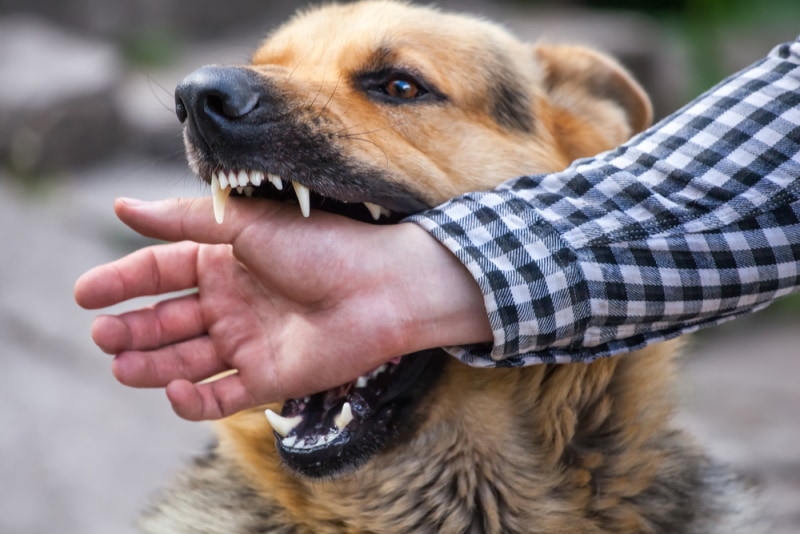

Canadian Dog Attack Fatalities Statistics
6. It’s estimated that there are one to two fatalities in Canada from dog attacks yearly.
(Canadian Veterinary Journal)
In the same study, it was found that there were 28 fatalities between 1990 and 2007. In this study and to compare the numbers, the U.S. averaged 15 deaths each year.
7. Of the 28 fatalities between 1990 and 2007, 24 of them were children under 12.
(Canadian Veterinary Journal)
The other four victims were adults over 21 years, but the average age of the victims was about 5 years old. Sadly, 19 of the child victims were left alone with a dog.
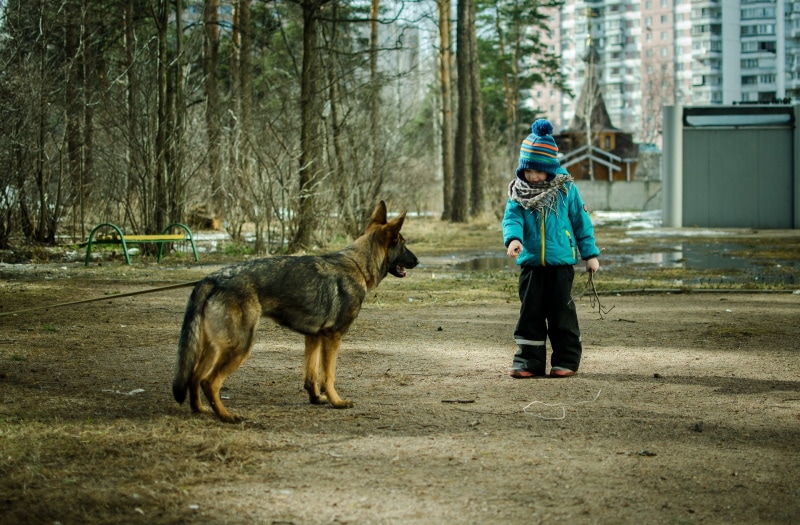
8. The prairie provinces had the highest incidents of fatal dog attacks.
(Canadian Veterinary Journal)
Of the reported 28 dog attack fatalities, 13 occurred in Manitoba, Saskatchewan, and Alberta. Most of the attacks occurred in rural areas and on their own or someone else’s property.

Canadians on Banning Breeds Statistics
9. 58% of Canadians believe that attacks are due to bad owners and not bad dogs/breeds.
(Angus Reid)
Multiple provinces have enacted breed-specific legislation, but 58% of Canadians believe that dog attacks are isolated incidents and that these are cases of bad owners and not bad dogs or breeds. The other 42% believe that certain breeds are more dangerous and aggressive by their very nature.

10. All provinces have sided with the “bad owners, not bad breeds” stance.
(Angus Reid)
The province with the highest percentage of people siding with dog breeds not being problematic was Saskatchewan, at 64%. The province with the smallest percentage was British Columbia at 52%.
11. Younger Canadians are more likely to fall on the “bad owners” side.
(Angus Reid)
In contrast, the older generation believed in legislation targeting both breeds and owners.

12. 67% of Canadians support muzzling breeds considered “dangerous.”
(Angus Reid)
39% of Canadians still support banning “dangerous” breeds entirely. The younger set tends to be aged 18–34, and the older generation is 55 and older. Additionally, men were likelier to believe that some breeds are naturally aggressive (46%) than women (37%).

Frequently Asked Questions About Dog Bites in Canada
Is the Pit Bull the breed that attacks the most?
Some studies say yes and others say no. There are studies out there that found that the Collie was the breed most likely to bite, while another found it to be the Labrador Retriever and yet another the Pit Bull.
The most significant factors that can lead to a dog biting come from their own environment and how they have been raised, trained, and socialized.
But all dogs have the capacity to unexpectedly bite if they are under enough stress and are triggered in some way.
Many of the available statistics seem to have Pit Bulls and any dog that is Pit Bull-like on the top of their lists. But Pit Bulls raised in a loving home are much less likely to become aggressive out of the blue.
The unfortunate truth is that many people raise Pit Bulls to be aggressive because of their reputation, making them difficult dogs to be around, particularly within certain communities.

Does breed-specific legislation help reduce dog bites?
Most studies say no. It’s impossible to lay judgment on an entire breed considering each dog will have a different environment and context surrounding the event. Whether the dog has been neutered, their sex, how they’ve been trained, and so on will affect the bite risk.
In some cases, this kind of legislation has no effect at all. For example, the Toronto Humane Society found that after Ontario introduced breed-specific legislation in 2005, there was no real change in the number of reported dog bites.
Conversely, Calgary had fewer bites over a 20-year period, but not because it banned any breeds. Instead, it used tough licencing and enforcement in addition to dog safety campaigns for the public. (Toronto Humane Society, AVMA)
How can I avoid getting bitten by a dog?
First, you need to recognize the signs that a dog is stressed and needs to be left alone. Look for the following signs:
- The whites of the eyes are showing
- Tail tucked between the legs
- Ears held back and down
- Licking, yawning, or chewing
- A curved back
- Pulling or looking away from you
- Lips closed tight
Once you recognize these signs of fear or stress, this is when you need to back off. Also, these are early warning signs. When the dog starts growling, you’ve already missed all the cues that tell you that the dog is uncomfortable.

What should I do if a dog is growling at me?
Whatever you do, don’t run, as this will trigger the dog’s prey drive, and they will chase you down on instinct.
When a dog is growling, stop moving, freeze for a moment and then start to withdraw. For example, if the dog starts growling when you reach out to give them a pet, don’t immediately snatch your hand away and jump away from the dog. They will sense that you are afraid, and more aggressive behaviour can follow. Just freeze, slowly take your hand away, and bring it back to your side.
Look like you’re showing the dog that you’re not afraid, but rather that you’re being respectful by backing off. This is what your body language needs to convey.
Then, you’ll want to slowly back away from the dog until they seem to lose interest by dropping eye contact or turning their body away. At this point, you can turn around and walk away.
You’ll want to avoid speaking to the dog during this interaction. While you don’t want to make direct eye contact, ensure that you keep your eyes on the dog the entire time.
If the dog starts to pursue you even when you’ve done everything right, keep your body facing the dog at all times. If the dog runs around you, swivel yourself so you still face the dog.

How should I teach my child about approaching a dog?
Since children are the ones most likely to be attacked by a dog, it’s essential that you teach them how to approach any dog, and always supervise interactions.
Don’t assume that there won’t be an attack just because you know and trust the dog. As the statistics show, most attacks happen when a child is alone playing with a dog.
Teach your children the basics:
- Always receive permission from the dog owner before approaching a strange dog.
- Wait for the dog to approach you first. If the dog seems uninterested, you don’t want to force any interaction.
- Pet the dog on the shoulders and back, not the head.
- Be calm at all times. Avoid any jumping and yelling, which can make an anxious dog more nervous.
- Never put your face near a strange dog’s face.
- Watch for the warning signs of stress. If the dog seems nervous, take your child away.
Another trick is to teach children to “be a tree” when a dog comes at them, or the child feels nervous around an excitable dog. This means they should react by planting their “roots” (feet) and folding their “branches” (hands) in.
Then, they are supposed to stand still, staring down at their “roots,” and count or sing a song inside their head. The dog will probably just sniff the child and leave. (Doggone Safe)

Conclusion
While there aren’t many statistics that showcase dog bites and attacks in Canada, there’s no question that dog bites are a fact of life. The best way to deal with the situation is to educate the public rather than uniformly banning specific breeds.
Learn how to read a dog’s body language before approaching a dog that you don’t know. Educating yourself and your family will be the best way to avoid a dog bite.
If you’re a dog owner, ensure that your dog is spayed or neutered and receives the necessary training and socialization. Always keep your dog on a leash or fenced-in, as many dog attacks happen when dogs get loose. It’s easy to say that your dog will never bite someone, but any dog can bite under the right circumstances.
See Also:
Featured Image Credit: V_Lisovoy, Shutterstock









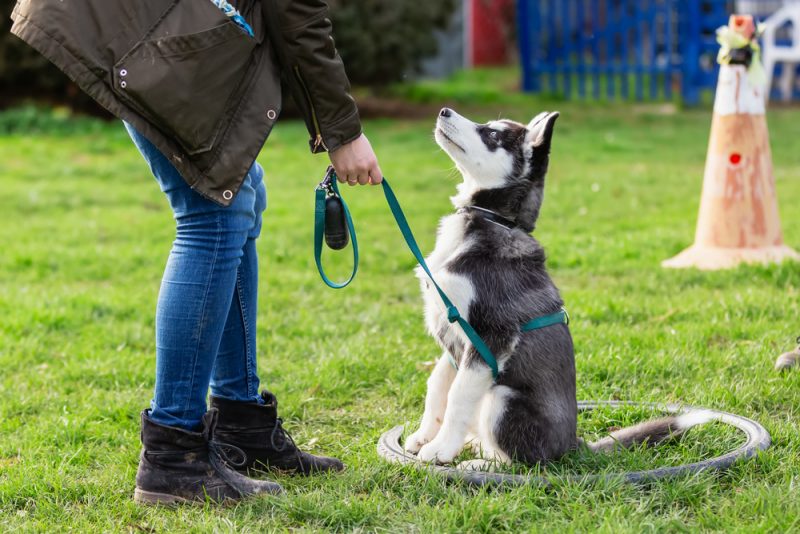




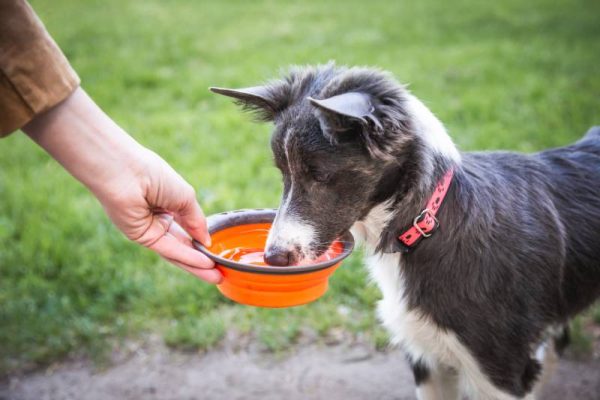




2 Responses
One of the most informative articles I’ve ever read. Thank you!
Thank you so much, Christine! We're really glad you found the article helpful. 🙂